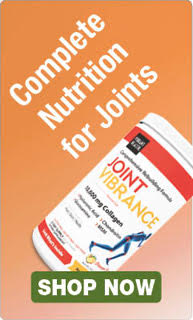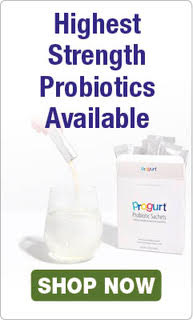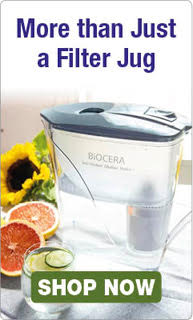Heavy metals are all around you; you don't have to work in a mine or a factory to be contaminated.
Lead can leach out of the soil or from your old water pipes into your tap water.
Toxic elements from arsenic are widely used in fertilisers, herbicides and pesticides that seep into the soil in which food is grown.
Lead and cadmium are used as colour enhancers in many household products and even children's toys, although the EU has attempted to stamp this out.
Poor disposal of factory waste, lead batteries, paints, and treated wood can cause soil and air contamination many kilometres away.
The Link Between Heavy Metals and Diabetes
Diabetes is a modern disease that was almost unheard of just one century ago. Many environmental and genetic factors contribute to diabetes and scientists are gradually testing the environmental pollutants that are so abundant in the industrialised world for their possible contribution.
Up to now relatively few studies have been conducted on the link between heavy metals and diabetes, but with depressing and consistent results.
The Role of Arsenic
In 1988, researchers studied 891 people who lived in villages in southern Taiwan where arsenic exposure was chronic and fairly high. They discovered that those who drank from the most contaminated water sources experienced the worst symptoms of type 2 diabetes and required the most intense insulin treatments. The results of this study should be taken seriously.
Unlike studies conducted in a laboratory, the results were obtained in a natural setting, much as the one in which we all live. Moreover, they reached the conclusion after examining people who had been exposed for some time, which allowed them to draw conclusions about chronic exposure, rather than a once-off incident of contamination.
A later study (1) in similar settings in Bangladesh reached similar conclusions and a study that compared the arsenic in Americans' urine samples found that those with the highest arsenic concentrations suffered from the most severe diabetes symptoms (2).
At this stage the mechanisms are not well understood, but researchers have hypothesised that it causes oxidative stress (3), which in turn causes amyloid formation in the pancreas that damages insulin-secreting cells.
The Role of Cadmium
Here research is somewhat mixed. Most studies (4) from various countries (5) have found that those with higher cadmium levels (6) in their urine are more likely to struggle with diabetes while some methodologically strong studies in natural settings are less certain (7). The researchers who have reached positive results have theorised that it inhibits the release of insulin and that it damages the insulin receptors.
The Role of Mercury
Mercury is a metal that causes substantial oxidative stress, and since oxidative stress to the cells in the pancreas have been proved to destroy the cells that produce insulin, it is unsurprising that the few available studies suggest that people with high concentrations of mercury in their urine seem to battle with type 2 diabetes (8).
In fact, some researchers have even concluded that children that are exposed to mercury have a greater chance of developing type 2 diabetes (9) much later in life, which suggests that the exposure need not be chronic for the damage to occur.
How to Combat Heavy Metal Toxicity
These methods may not eliminate type 2 diabetes symptoms; but it may help some people manage their diabetes and potentially lessen the amount of insulin they need. Still, preventing the symptoms from worsening due to continuing heavy metal toxicity may be possible. Firstly, remove the heavy metals from your environment and, secondly, try to remove them from your body.
- Use a water filter that removes heavy metals from your water. Even if it fails to catch all traces of all metals, reducing your heavy metal intake to near zero will help a lot. Almost all of the studies that found a link between diabetes and heavy metal poisoning found the risk to exist at reasonably high levels. Considering all the litres of water that you consume when you cook and drink, this can make a big difference.
- Buy organic food to avoid the metals used in pesticides. Since the soil is still contaminated from pesticides used on other farms, this will not cut the exposure to zero either, but every bit helps.
- When you buy toys and household products, buy from reputable brands that have been tested for compliance with European rules. Most American and European brands should be safe, unless they make use of a new supplier, in which case they will probably recall the products and refund you.
- Avoid using pesticides and chemical fertiliser in your own garden. Sieves and netting will keep pests away from your vegetable and herb garden, while natural fertilisers are probably better anyway because it allows worms to fertilise the plants as nature intended.
- An iodine supplement can pull lead, mercury, cadmium, and aluminium from your body tissue from where it can be excreted. If you do not eat sea vegetables, your body may well be short of iodine. The added advantage is its ability to create an inhospitable environment for bacteria and fungi. As mentioned earlier, this is not a diabetes cure. Medical science has not yet discovered a substance that can reverse insulin resistance. But it may prevent the ongoing metal toxicity and the further damage that it may cause.
- Selenium is another useful supplement to take to help reduce heavy metals from your system. Together with its function as a heavy metal detoxer, it is also a strong antioxidant that can help your body battle the damage to the pancreatic cells responsible for insulin secretion.
- Chlorella is a green alga that is also available in supplement form. It binds to heavy metals in the blood and digestive tract and steer them out of the body, usually via the bowels. Chlorella was originally tested in mine shafts, where it proved successful at cleaning heavy metals from the shafts after major mining operations. On those grounds, it certainly seems to be quite powerful.
These methods may not eliminate type 2 diabetes symptoms; but it may help some people manage their diabetes and potentially lessen the amount of insulin they need. Still, preventing the symptoms from worsening due to continuing heavy metal toxicity may be possible. Firstly, remove the heavy metals from your environment and, secondly, try to remove them from your body.
- Use a water filter that removes heavy metals from your water. Even if it fails to catch all traces of all metals, reducing your heavy metal intake to near zero will help a lot. Almost all of the studies that found a link between diabetes and heavy metal poisoning found the risk to exist at reasonably high levels. Considering all the litres of water that you consume when you cook and drink, this can make a big difference.
- Buy organic food to avoid the metals used in pesticides. Since the soil is still contaminated from pesticides used on other farms, this will not cut the exposure to zero either, but every bit helps.
- When you buy toys and household products, buy from reputable brands that have been tested for compliance with European rules. Most American and European brands should be safe, unless they make use of a new supplier, in which case they will probably recall the products and refund you.
- Avoid using pesticides and chemical fertiliser in your own garden. Sieves and netting will keep pests away from your vegetable and herb garden, while natural fertilisers are probably better anyway because it allows worms to fertilise the plants as nature intended.
- An iodine supplement can pull lead, mercury, cadmium, and aluminium from your body tissue from where it can be excreted. If you do not eat sea vegetables, your body may well be short of iodine. The added advantage is its ability to create an inhospitable environment for bacteria and fungi. As mentioned earlier, this is not a diabetes cure. Medical science has not yet discovered a substance that can reverse insulin resistance. But it may prevent the ongoing metal toxicity and the further damage that it may cause.
- Selenium is another useful supplement to take to help reduce heavy metals from your system. Together with its function as a heavy metal detoxer, it is also a strong antioxidant that can help your body battle the damage to the pancreatic cells responsible for insulin secretion.
- Chlorella is a green alga that is also available in supplement form. It binds to heavy metals in the blood and digestive tract and steer them out of the body, usually via the bowels. Chlorella was originally tested in mine shafts, where it proved successful at cleaning heavy metals from the shafts after major mining operations. On those grounds, it certainly seems to be quite powerful.
Reduce The Heavy Metal Burden Common in Diabetics
Type 2 diabetes is an unpleasant condition to live with and is worth avoiding at almost any cost. These strategies for avoiding and minimising the impact of heavy metals are relatively cost-effective and easy to implement.
Article updated 29/11/24
Sources
1. Mahfuzar Rahman, Martin Tondel, Sk Akhtar Ahmad, Olav Axelson, Diabetes Mellitus Associated with Arsenic Exposure in Bangladesh, American Journal of Epidemiology, Volume 148, Issue 2, 15 July 1998, Pages 198–203, https://doi.org/10.1093/oxfordjournals.aje.a009624
2. Navas-Acien A, Silbergeld EK, Pastor-Barriuso R, Guallar E. Arsenic Exposure and Prevalence of Type 2 Diabetes in US Adults. JAMA. 2008;300(7):814–822. doi:10.1001/jama.300.7.814 https://doi.org/10.1093/oxfordjournals.aje.a009624
3. Chin-Hsiao Tseng,The potential biological mechanisms of arsenic-induced diabetes mellitus,Toxicology and Applied Pharmacology,Volume 197, Issue 2,2004,Pages 67-83,ISSN 0041-008X. https://doi.org/10.1016/j.taap.2004.02.009.
4. Joshua R. Edwards, Walter C. Prozialeck,Cadmium, diabetes and chronic kidney disease,Toxicology and Applied Pharmacology,Volume 238, Issue 3,2009,Pages 289-293,ISSN 0041-008X. https://doi.org/10.1016/j.taap.2009.03.007
5. Gary G. Schwartz, Dora Il’yasova, Anastasia Ivanova; Urinary Cadmium, Impaired Fasting Glucose, and Diabetes in the NHANES III. Diabetes Care 1 February 2003; 26 (2): 468–470. https://doi.org/10.2337/diacare.26.2.468
6. Melissa Haswell-Elkins, Soisungwan Satarug, Peter O’Rourke, Michael Moore, Jack Ng, Victor McGrath, Maria Walmby,Striking association between urinary cadmium level and albuminuria among Torres Strait Islander people with diabetes,Environmental Research,Volume 106, Issue 3,2008,Pages 379-383,ISSN 0013-9351. https://doi.org/10.1016/j.envres.2007.10.004
7. Witaya Swaddiwudhipong, Pranee Mahasakpan, Pisit Limpatanachote, Somyot Krintratun,Correlations of urinary cadmium with hypertension and diabetes in persons living in cadmium-contaminated villages in northwestern Thailand: A population study,Environmental Research,Volume 110, Issue 6,2010,Pages 612-616,ISSN 0013-9351. https://doi.org/10.1016/j.envres.2010.06.002
8. Ya Wen Chen, Chun Fa Huang, Keh Sung Tsai, Rong Sen Yang, Cheng Chieh Yen, Ching Yao Yang, Shoei Yn Lin-Shiau, Shing Hwa Liu; The Role of Phosphoinositide 3-Kinase/Akt Signaling in Low-Dose Mercury–Induced Mouse Pancreatic β-Cell Dysfunction In Vitro and In Vivo. Diabetes 1 June 2006; 55 (6): 1614–1624. https://doi.org/10.2337/db06-0029
9. Ka He, Pengcheng Xun, Kiang Liu, Steve Morris, Jared Reis, Eliseo Guallar; Mercury Exposure in Young Adulthood and Incidence of Diabetes Later in Life: The CARDIA Trace Element Study . Diabetes Care 1 June 2013; 36 (6): 1584–1589. https://doi.org/10.2337/dc12-1842




























Leave a comment